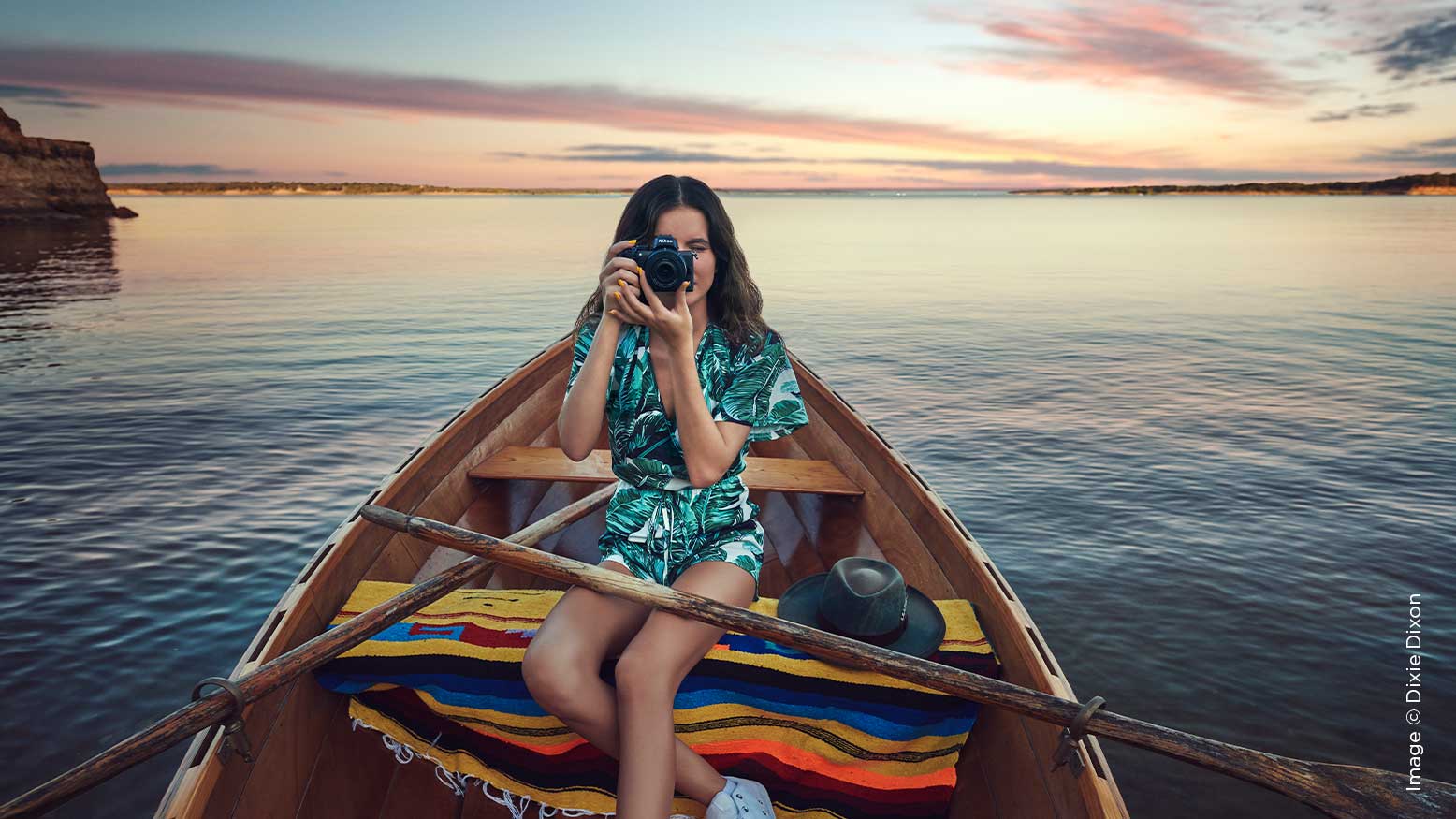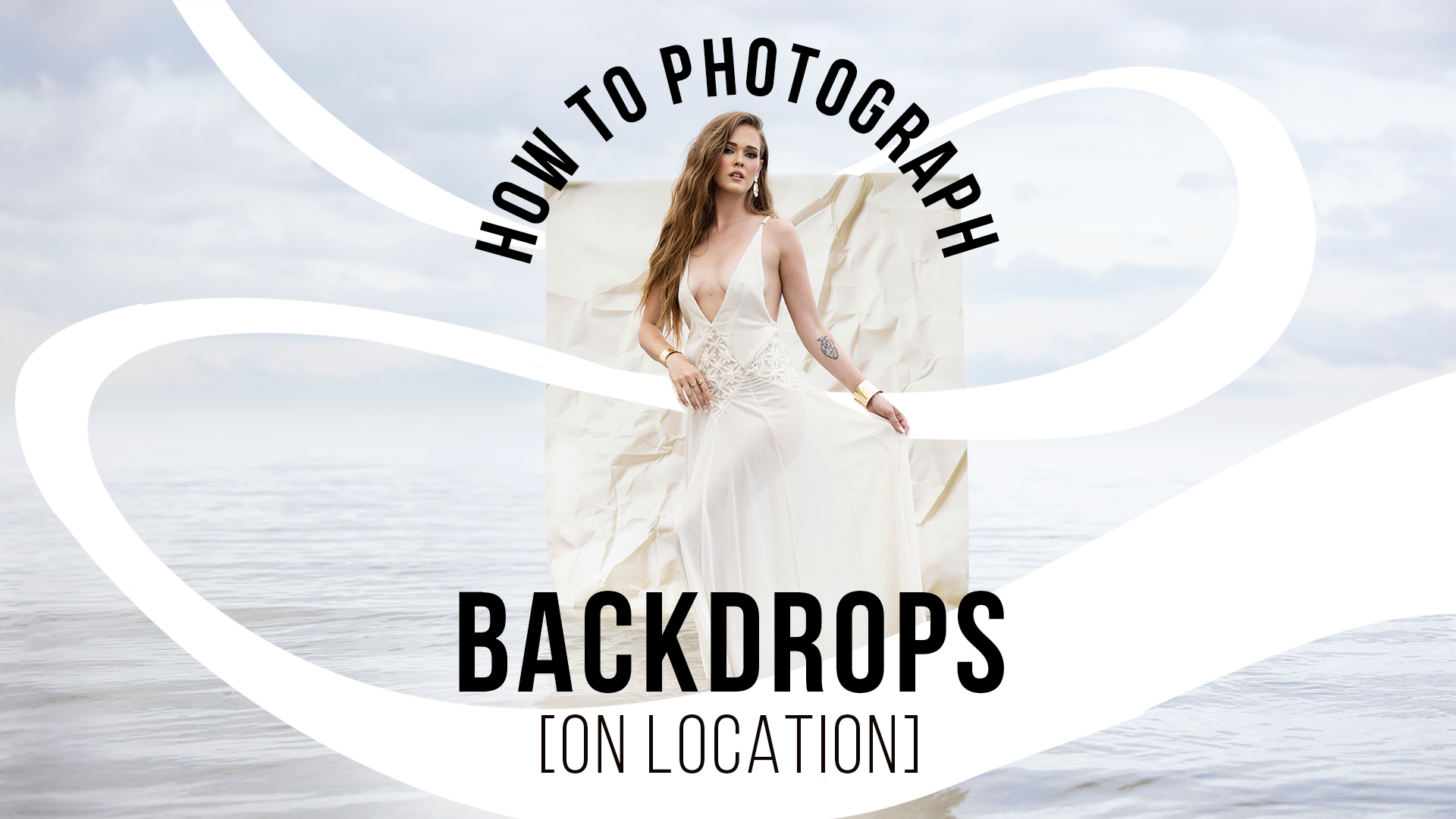The Traveling Commercial Photographer with Dixie Dixon
You could say that I tend to live my life in transit. I am a traveling nomad, a road warrior of sorts, and sometimes I feel more at home on American Airlines aisle seat 10c than anywhere else. When I decided to become a commercial photographer, I had no idea how hard it would be, but I had an internal knowing that it would be worth it. From a bird’s-eye view, this adventure looks quite glamorous and the end result of these productions most certainly is. But what folks don’t get to see are the 16-hour days in 110-degree heat put in to get the shot, the 4am call times for light, the intense pressure of clients’ high expectations, the cold-calling to get new clients, the all-nighters I pull to get retouched images over to a client before their print deadline, the endless hours my Dreamteam and I spend estimating and planning productions, and the hundreds of emails that go back and forth for each and every shoot. There are no sick days in this kind of work. You could call it sweat equity or you could call it true grit… If you live your life as a commercial photographer, or any kind of photographer for that matter, you know exactly what I’m talking about. That being said, in writing this, I hope to illuminate the fact that anyone that has the dream of being a traveling commercial photographer, you can do this!
I began with only an idea in mind, I had no inside connections, no experience, and no clue how I was going to make this all happen. The photography game has primarily been trial and error for me and this industry changes constantly. The truth is, there is no set path to success in photography. That fact alone should liberate you. You need no degree, formal training, or certificate to become a photographer. The most important decision you have to make is to define what success looks like to you and go after that vision! I’ve always loved the idea of travel and pursuing my passion of photography, so I’ve made decisions in my life accordingly to pursue that passion, from keeping my overhead low (overhead is basically just business expenses, so I don’t own a big studio, I rent studios when needed, etc.) and also waiting to do the whole family thing. This business is a bit easier to break into when you’re not having to support a family, but doable either way as I know folks who make it happen. I just knew that I wanted to focus on my career and travel often. I am always most present in this world when I am creating art and working with the Dreamteam, and that is what has kept me going in the toughest parts of this business! So as we all adventure ahead in 2020, I wanted to share some of my favorite tips on how to bring creative ideas to life on your destination projects.
The Destination Commercial Project: Tips for Traveling
Pack Smart: I always travel with and carry on my Nikon camera gear, MacBook Pro, and G-drives and will rent lighting and grip equipment when we get to the main city nearest to a location. Or I’ll use Borrowlenses and have it shipped to the hotel. If a location is super remote, we may end up traveling with lighting. So basically I carry on my Manfrotto Roller bag and backup and always pack an extra pair of clothes in the backpack in case checked luggage doesn’t make it.
Camera Gear: I usually travel with 4 camera bodies, lenses, and I typically use one body for stills and one body for video and then I have backups. My current bag has the Nikon Z 7, D850, D5, and D810 with prime lenses. Everything is labeled on the back cap of my lenses.
Hard-drives: I always backup all the images and video on set to 3 separate hard-drives. I love the SSD G-Technology drives because they are small, fast, and rugged. Then, I’ll Fedex one of the drives home after a production and my team and I will fly with 2 drives so we are sure not to lose anything. When clients are putting big bucks into the production, the last thing you want to do is lose any imagery or video created.
Camera bags: After breaking 3 suitcases in one year alone, I found that there truly is an Art to Traveling, and that art begins with finding reliable, durable, and functional camera bags, because boy my luggage sure takes a beating! Many shoots take me to rugged areas and remote places so I need something I can rely on. Nothing is worse than having to drag a heavy bag around the country with broken wheels or handles. I have found the Manfrotto Reloader Bags to be extremely reliable! When I’m jumping on a flight, I need a bag that I can fit ALL of my camera gear in, fit in the overhead compartments, and keep everything safe and secure. And once I get to a location such as the beach where I’m dealing with sand and the elements, I like to put my essentials into my backpack so I can wear it and shoot at the same time. It has easy access compartments so I can switch lenses quickly.
Lighting: Lighting-wise, my team and I love to use the Profoto B1x’s or B1’s on location because they are super powerful and battery operated, so no need for generators. Sandbags are a must to keep stands/lights from falling over.
Insurance: It’s always a great idea to insure your gear as it takes a beating when you travel. And most locations require proof of insurance anyways, so you’ve got to have it. I love TCP insurance because they are reliable and quick in getting COI’s back within a couple hours. So many productions happen so fast, this kind of speediness is needed.
Media Rates: Not many people know about this, but all airlines have a flat baggage rate for members of the media, photographers, and filmmakers. American Airlines has the most friendly policy for photographers and has a flat rate of $50 per bag up to 99 lbs. All the airlines have slightly different language in their policy, but they all will basically require a form of identification from your company that proves who you are. Most of the time, a business card and business credit card works. If you have a media pass that you can print and wear, even better. Just ask when you get to ticketing; it may take a little more time but is completely worth it! You can Google each airline’s Media Rate Policy online.
Airline Credit Card: It’s a great idea to sign up for a credit card for the airline you travel the most, which will give you priority boarding, a free checked bag, and lots of other perks. I charge all of my production/business expenses to this card and then pay it off monthly in order to rack up a ton of miles and status.
Shot list: Always carefully consider your shot list as well as climate when packing gear. Packing hand warmers in cold climates is a must for crew and models.
Dreamteam: Ideally if the budget allows, I prefer to travel with my normal crew consisting of my producer, lighting tech, and Digitech, and then we book local talent for wardrobe, hair/makeup, and models. I always work with people that keep it positive. It takes so much hard work to make these productions happen and you need to be surrounded by solid, positive, solution-oriented folks.
Location Scouting: My Dreamteam and I always fly out and arrive a day or two before the job in order to scout locations and pick up any last-minute needs before the shoot starts. Then, we always book an extra day or so after the production in case of bad weather. If we don’t end up needing those weather days, we can either set up a test shoot for the portfolio in the beautiful location or take a day off to enjoy travel.
Location Releases: I work with my producer to acquire location releases before we arrive at the location. Sometimes we can lock down locations through Google and location scout companies and sometimes we have to book a scouting trip in advance of the job.
Utilize Airbnb or Vrbo: A lot of times it becomes more cost effective to book a house on Airbnb than a hotel. Sometimes we will even utilize Airbnb for renting a location to shoot in. It’s important to communicate with the owner of the house to let them know, as the price may change a bit for a commercial production.
Scheduling: I always work with my producer to schedule the most important shots during best lighting – sunrise/sunset. We’ll use the Sun Seeker app when scouting locations to see where the sun will be at different times of the day. The crew goes into overtime after 10 hours, so a lot of times we need to choose either sunrise or sunset and create or find shade during the day.
Shoot Personal Work: As a photographer, you always want to be shooting personal work as it keeps it fresh and attracts your ideal clients. When I’m going to be in a gorgeous location for work or play, I always try to book an extra day to shoot personal work. Much of the time, these shoots may be simple and I’ll book a local model to collaborate with and we go create new content. Other times, I may shoot a more elaborate personal project and utilize a whole crew, model, hair/makeup, and wardrobe. I work with artists who want to build their book and will work in trade for images since they’re not being used commercially. Then I’ll pay my photo assistants. This is the nature of the business and personal work always drives paid work.
I hope this helps you in your future destination photography gigs and I’d love to leave you with a little nugget of wisdom that I paraphrased from a brilliant graduation speech by Jim Carrey that really resonated with me this year:
“So many of us choose our path out of fear disguised as practicality! What we really want seems impossibly out of reach and so ridiculous to expect that we never dare to ask the universe for it! The truth is, you can fail at what you don’t want to do, so you may as well take a chance at doing what you love! Fear will always be a player in your life but you get to decide how much. Your need for acceptance can make you invisible in this world. Be authentically you and don’t let anything stand in the way of your light! We need to ask ourselves, what does the world need that my talent can provide? All of us are ready and able to do beautiful things in this world! So your job is not to figure out how it’s going to happen, but to let the universe know what you want, work towards it, and let go of how it will come to pass! It will unfold exactly how it’s supposed to for your greatest good!” – Jim Carrey




